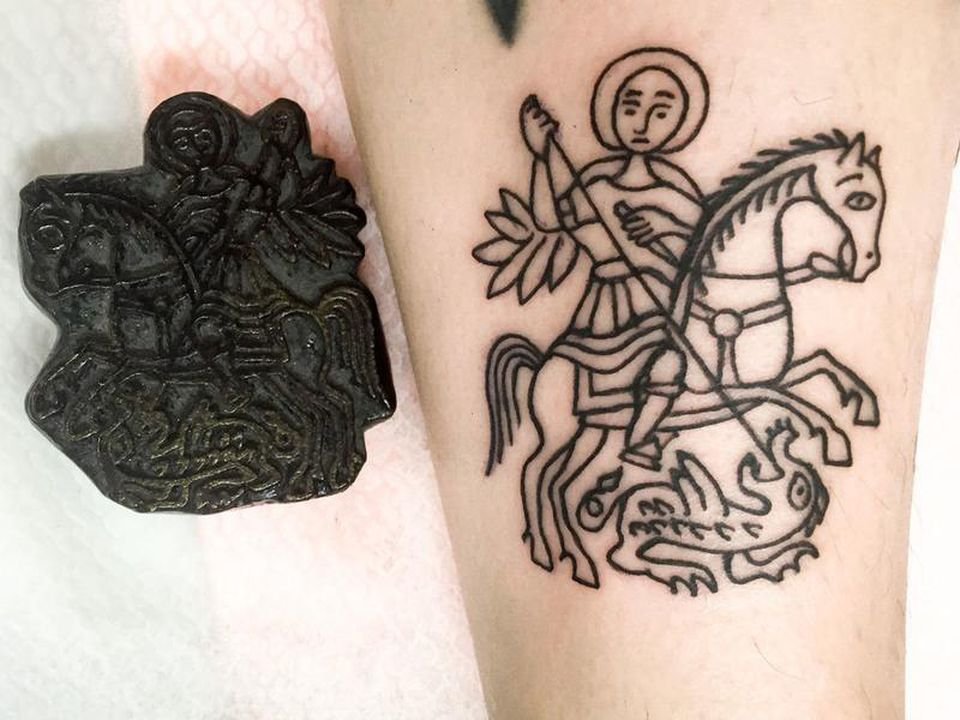The Historical Use of Tattoo as a Stigmatizing Practice
Tattoos have a long and complex history, and their meaning and significance have varied widely across cultures and time periods. In some cultures, tattoos have been seen as a form of art or self-expression, while in others they have been viewed as a mark of shame or criminality.
In ancient Greece, tattoos were primarily used to mark criminals and slaves. The term “stigma” was used to refer to these tattoos, and it carried a negative connotation. Gladiators and soldiers were also sometimes tattooed, but their tattoos were more likely to be decorative in nature.
When Christianity became the dominant religion in the Roman Empire, tattoos were officially banned. This was due to the belief that tattoos were a form of mutilation and that they defaced the human body, which was seen as a temple of God.
Despite this ban, tattoos continued to be practiced in some parts of the world, particularly in Eastern cultures. In China, tattoos were used to identify prisoners, and they were also seen as a form of punishment for criminals. In Japan, tattoos were originally used for decorative purposes, but they eventually became associated with criminals and social outcasts.
The Edo Period and the Rise of Irezumi
The Edo period (1603-1868) in Japan saw a resurgence of interest in tattoos. This was due in part to the influence of woodblock prints, literature, and art, which often featured tattooed characters. Tattoo artists known as “horimono” began to develop more elaborate and detailed designs, and tattoos became increasingly popular among members of the samurai class.
However, tattoos were still not widely accepted by the general public, and they continued to be associated with criminals and social outcasts. In 1853, the arrival of Commodore Matthew Perry and his “Black Ships” forced Japan to open its doors to foreign trade. This led to an increase in contact between Japanese people and foreigners, and it also exposed Japanese culture to Western ideas and values.
The Impact of Western Culture
Westerners were initially shocked by the sight of Japanese people with tattoos. They saw tattoos as a sign of barbarity and backwardness, and they associated them with criminal gangs and other undesirable groups. This negative view of tattoos was reinforced by the media, which often portrayed tattooed people as criminals or social misfits.
As a result of these negative stereotypes, tattoos became increasingly stigmatized in Japan. In 1968, the Japanese government passed a law banning tattooing for non-medical purposes. This law was motivated by the desire to protect Japanese society from what was seen as a corrupting foreign influence.
The Modern Era
Despite the ban on tattooing, the practice continued to exist in Japan, mostly among members of the criminal underworld. In the 1980s, there was a growing interest in tattoos among young people in Japan, and this led to the development of a new style of tattooing known as “irezumi.” Irezumi is a traditional Japanese style of tattooing that is characterized by its use of bold colors and intricate designs.
In recent years, tattoos have become increasingly popular in the West. This is due in part to the growing popularity of Japanese culture, as well as the increasing acceptance of tattoos in general. However, tattoos are still not widely accepted by all employers, and they can sometimes lead to discrimination.
Conclusion
The historical use of tattoo as a stigmatizing practice has had a lasting impact on the way tattoos are perceived today. Tattoos are still often associated with criminal activity, and they can sometimes lead to discrimination. However, there is a growing acceptance of tattoos in society, and they are now seen as a form of self-expression by many people.
As the stigma surrounding tattoos continues to decline, it is likely that they will become even more popular in the future.
